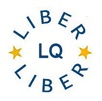Organizational charts in a selection of LIBER libraries : analysis of current trends
DOI:
https://doi.org/10.18352/lq.7864Abstract
The survey of organization structures analyzed in this paper was launched at the end of 2005 by the LIBER Division Library Management and Administration (LMA). It was conducted electronically in a representative group of LIBER libraries located across Europe: 78 libraries from 33 countries. It has been analyzed by the LMA Division’s committee and a member of the staff of the Bibliothèque nationale de France (BnF), allocating groups of countries between them, with the very important help of the French school of librarianship. I want to give warm thanks to all the colleagues who have responded and to those who have helped in the analysis of this very rich material. The selection of libraries was made by the members of the committee, according to their geographical contacts. The answers give an uneven geographic representation (see Appendix 2) and the libraries are of different types and sizes, but all are research libraries affiliated to LIBER. The main purpose of the survey was to gain an insight into what organization charts can tell us about the evolution of research libraries in different European countries. The key goals were to compare organization and service arrangements in a range of libraries, to gain an understanding of changes in recent years, as evidenced by the organization charts, and to analyse trends in the evolution of organizations, rather than arriving at firm quantifiable findings concerning change. Our intention was not to investigate change in general, but merely to look at the way it has been expressed through organization charts (and their evolution over time). The work is indicative rather than scientifically significant.Downloads
Download data is not yet available.

Published
2006-12-06
Issue
Section
Articles
License
Copyright (c) 2006 Suzanne Jouguelet

This work is licensed under a Creative Commons Attribution 4.0 International License.
How to Cite
Jouguelet, S. (2006). Organizational charts in a selection of LIBER libraries : analysis of current trends. LIBER Quarterly: The Journal of the Association of European Research Libraries, 16(3-4). https://doi.org/10.18352/lq.7864





